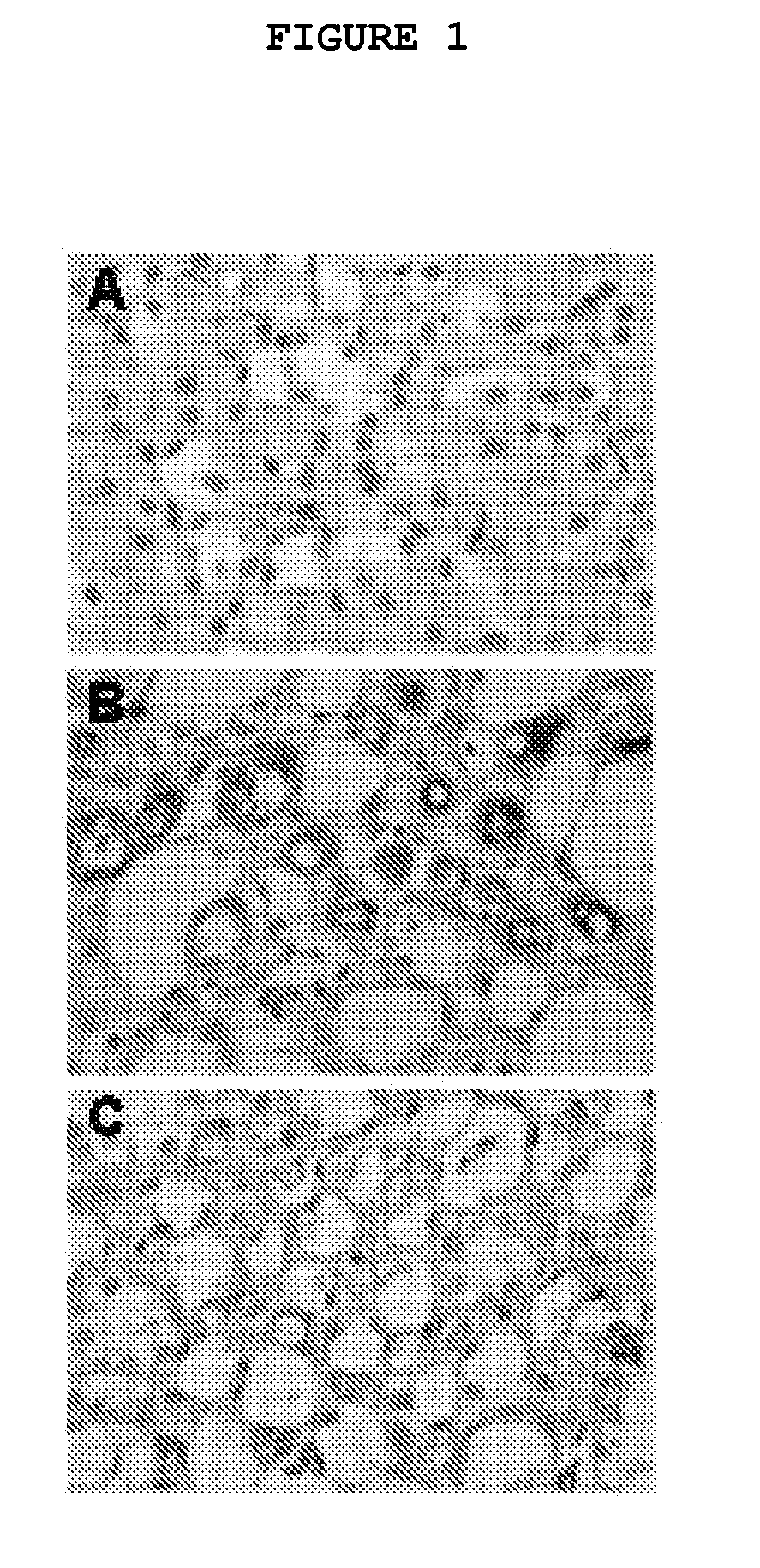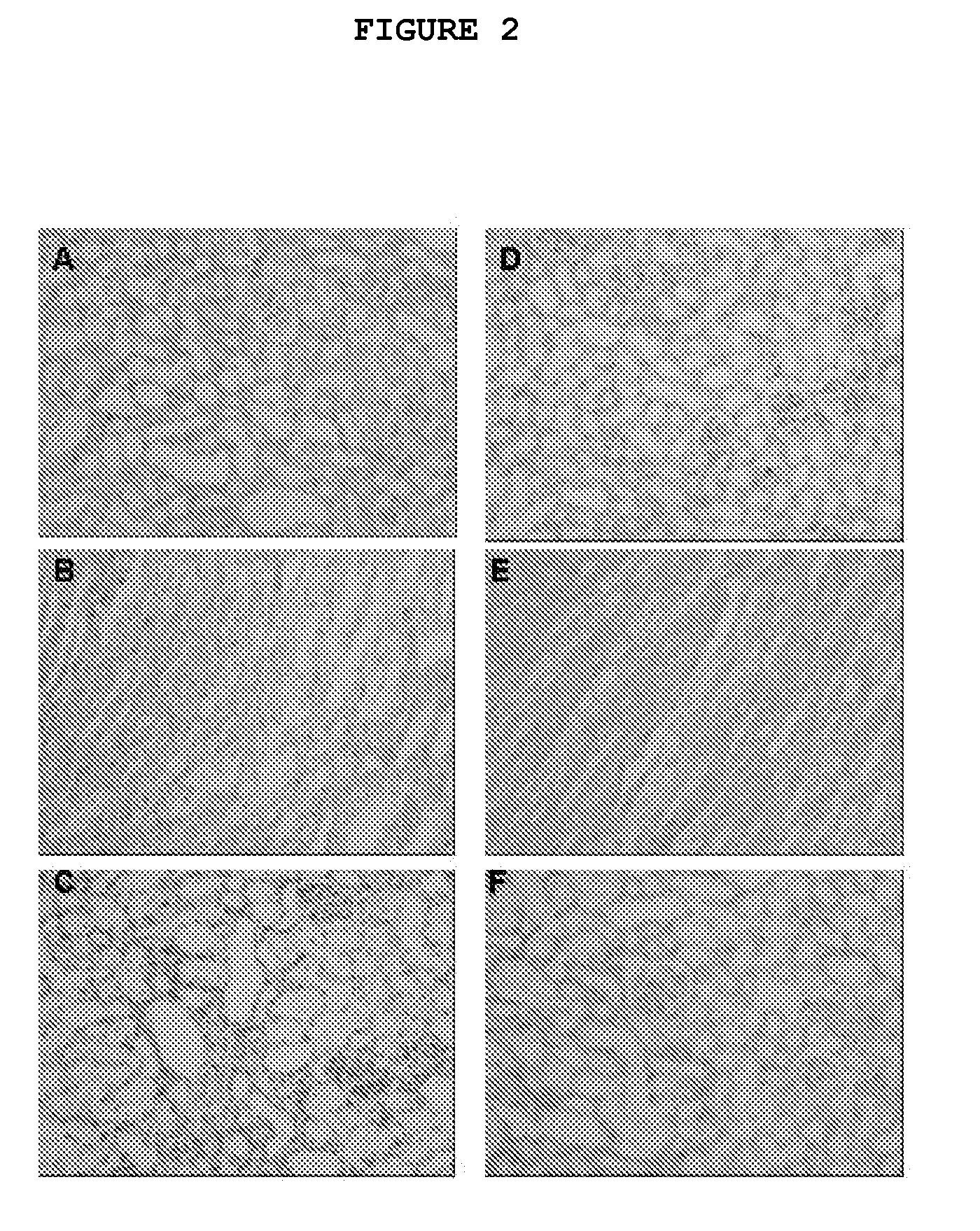Composition and Method for Treating Fibrotic Diseases
a fibrotic disease and composition technology, applied in the field of fibrotic disease compositions, can solve the problems of increasing mass, affecting the physiological and biochemical functions of the affected organs or tissues, damage to the normal structure of the organs or tissues, etc., and achieves less toxic effect, less toxicity, and better anti-fibrotic activity
- Summary
- Abstract
- Description
- Claims
- Application Information
AI Technical Summary
Benefits of technology
Problems solved by technology
Method used
Image
Examples
example 1
Suppression of Mouse Kidney Fibroblast Proliferation by 1-(3′-Fluorophenyl)-5-Methyl-2(1H)-Pyridone and PIRFENIDONE
[0040]Cell proliferation was measured by MTT assay. DMEM with 10% fetal serum was used as cell culture medium. The cells were prepared in suspension (1×105 / ml), and 100 μL of the suspension was transferred to each well of a 96 wells plate. Once the cells were attached to the plastic, the culture was changed to serum free medium and continued for another 24 hours. The serum free medium was aspirated, and various concentrations of 1-(3′-fluorophenyl)-5-methyl-2(1H)-pyridone (AKF-PD) 1-(3′-bromophenyl)-5-methyl-2(1H)-pyridone (AKF-BR) or PIRFENIDONE (PFD) in 10% serum medium were added into each well with 5 replicates for each concentration. The cells were stained with MTT (10 μL per well) at 24, 48, and 72 hours post drug treatment. After 4 hrs of incubation, the medium with MTT was aspirated from each well. One hundred μL MTT solvent was added to each well for 15 min. Th...
example 2
Suppression of Rat Myocardiac Fibroblasts Proliferation by 1-(3′-Fluorophenyl)-5-Methyl-2(1H)-Pyridone and PIRFENIDONE
[0042]Cell proliferation was measured by MTT assay. DMEM with 10% fetal serum was used as cell culture medium. The cells were prepared in suspension (1×105 / ml), and 100 μL of the suspension was transferred to each well of a 96 wells plate. Once the cells were attached to the plastic, the culture was changed to serum free medium and incubated for another 24 hours. Then, the serum free medium was aspirated, and various concentrations of 1-(3′-fluorophenyl)-5-methyl-2(1H)-pyridone (AKF-PD) or PIRFENIDONE (PFD) in 10% serum medium were added into each well with 5 replicates for each concentration. The cells were stained with MTT (10 μL per well) at 12, 24, or 48 hours post drug treatment. After 4 hrs of incubation, the medium with MTT was aspirated from each well. One hundred μL MTT solvent was added to each well for 15 min, and the dissolved MTT was measured with a plat...
example 3
Suppression of Human Stellate Cell Proliferation by 1-(3′-Fluorophenyl)-5-Methyl-2(1H)-Pyridone and PIRFENIDONE
[0044]Cell proliferation was measured by MTT assay. DMEM with 10% fetal serum was used as cell culture medium. The cells were prepared in suspension (1×105 / ml), and 100 μL of the suspension was transferred to each well of a 96 wells plate. Once the cells were attached to the plastic, the culture was changed to serum free medium and incubated for another 24 hours. Then, the serum free medium was aspirated, and various concentrations of 1-(3′-fluorophenyl)-5-methyl-2(1H)-pyridone (AKF-PD) or PIRFENIDONE (PFD) in 10% serum medium were added into each well with 5 replicates for each concentration. The cells were stained with MTT (10 μL per well) at 12, 24, or 48 hours post drug treatment. After 4 hrs of incubation, the medium with MTT was aspirated from each well. One hundred μL MTT solvent was added to each well for 15 min, and the dissolved MTT was then measured with a plate ...
PUM
| Property | Measurement | Unit |
|---|---|---|
| concentrations | aaaaa | aaaaa |
| concentrations | aaaaa | aaaaa |
| concentrations | aaaaa | aaaaa |
Abstract
Description
Claims
Application Information
 Login to View More
Login to View More - R&D
- Intellectual Property
- Life Sciences
- Materials
- Tech Scout
- Unparalleled Data Quality
- Higher Quality Content
- 60% Fewer Hallucinations
Browse by: Latest US Patents, China's latest patents, Technical Efficacy Thesaurus, Application Domain, Technology Topic, Popular Technical Reports.
© 2025 PatSnap. All rights reserved.Legal|Privacy policy|Modern Slavery Act Transparency Statement|Sitemap|About US| Contact US: help@patsnap.com



